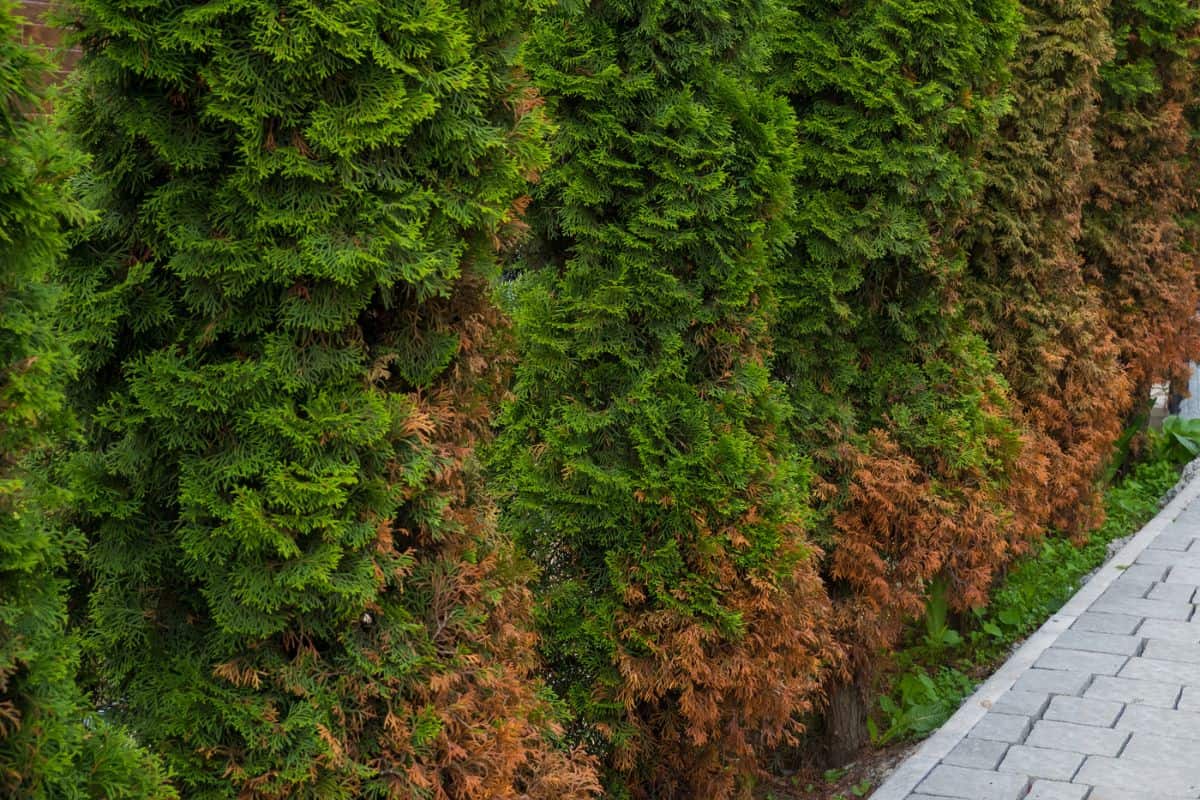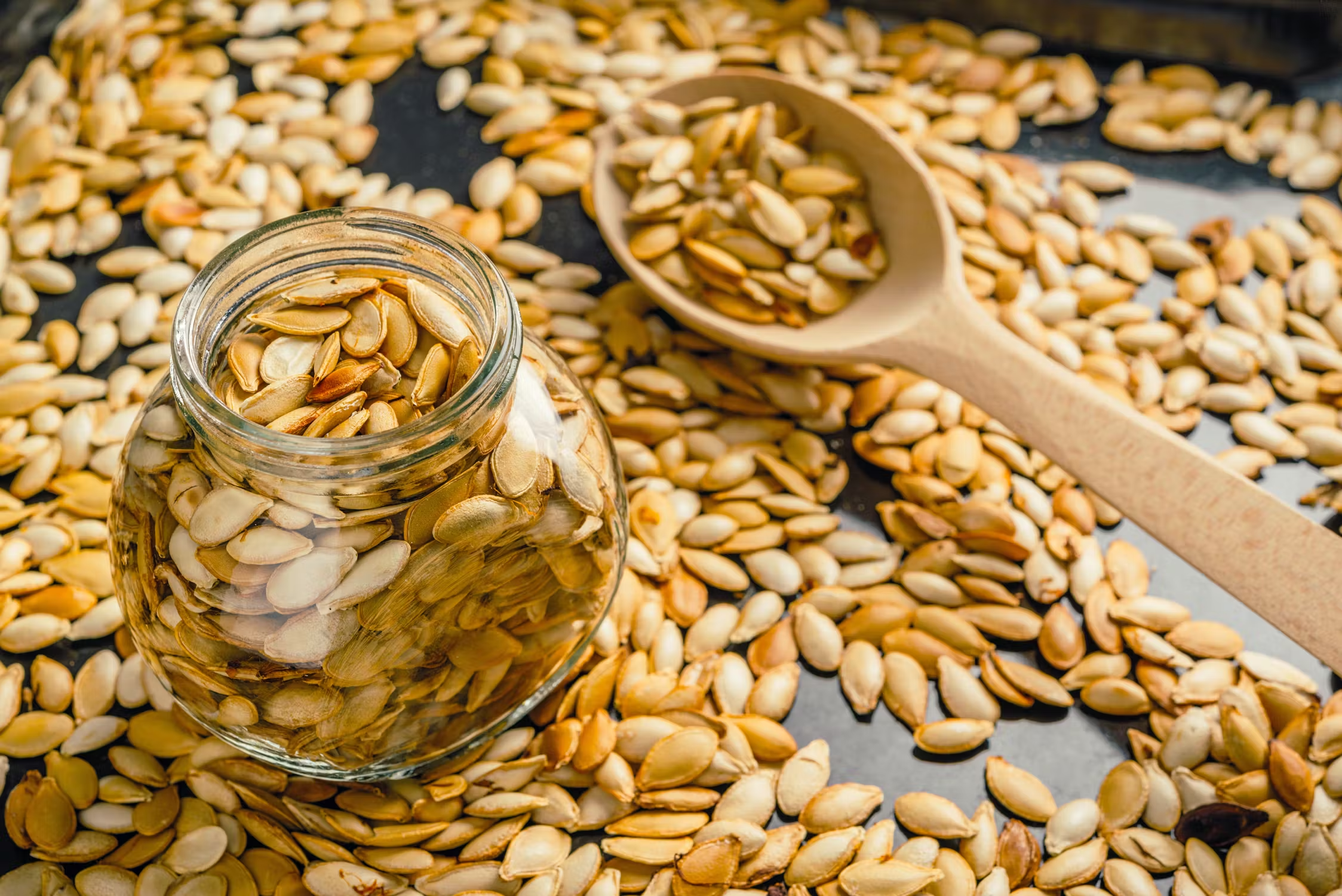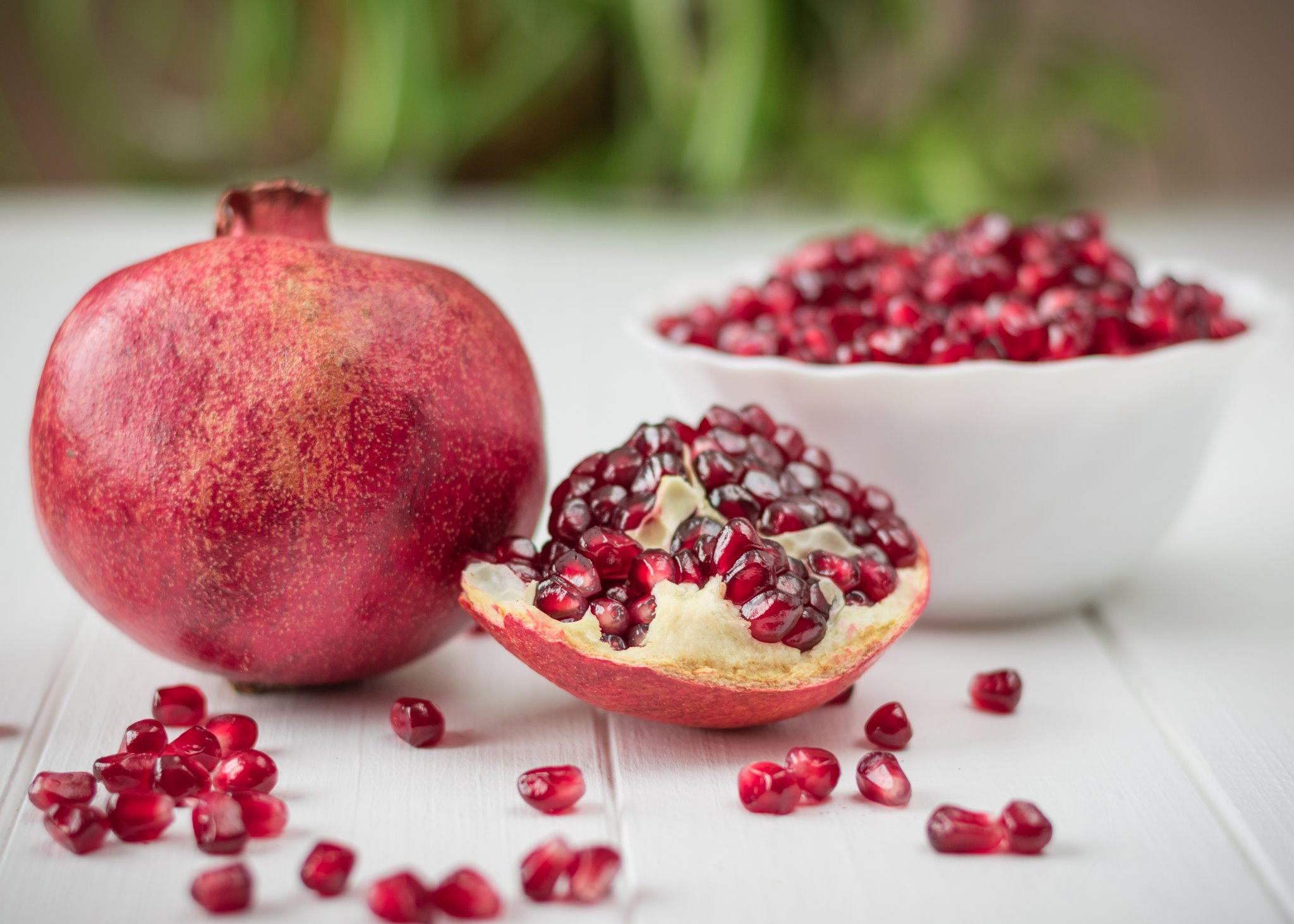Home>Gardening Techniques>Plant Care>How To Save Brown Arborvitae Trees


Plant Care
How To Save Brown Arborvitae Trees
Modified: January 22, 2024
Learn how to save your brown Arborvitae trees with our comprehensive plant care guide. Discover the best tips and practices to revive and maintain the health of your Arborvitae trees.
(Many of the links in this article redirect to a specific reviewed product. Your purchase of these products through affiliate links helps to generate commission for Chicagolandgardening.com, at no extra cost. Learn more)
Table of Contents
- Introduction
- Understanding Brown Arborvitae Trees
- Identifying the Causes of Browning
- Assessing the Tree’s Health
- Implementing Proper Watering Techniques
- Adjusting Soil pH and Nutrient Levels
- Pruning and Trimming Techniques
- Addressing Pest and Disease Issues
- Protecting Arborvitae Trees during Winter
- Conclusion
Introduction
Welcome to our guide on how to save brown arborvitae trees. Arborvitae, also known as Thuja, are popular evergreen trees commonly used for landscaping due to their attractive foliage and ability to provide privacy. However, if your arborvitae trees have started to turn brown, it’s a sign that something is amiss. Brown arborvitae trees can be distressing and can impact the overall aesthetic appeal of your outdoor space.
In this article, we will explore the common causes of browning in arborvitae trees and provide you with practical tips to revive and rejuvenate them. We will discuss proper watering techniques, the importance of soil pH and nutrient levels, pruning and trimming techniques, addressing pest and disease issues, and protecting arborvitae trees during the winter months.
By understanding the underlying causes of browning and implementing the necessary care and maintenance, you can bring your brown arborvitae trees back to health and restore their vibrant green color. Whether you are a seasoned gardener or a beginner, this guide will equip you with the knowledge and tools you need to save and revive your brown arborvitae trees.
So, let’s delve into the world of arborvitae trees and learn how to bring back their lush green foliage.
Understanding Brown Arborvitae Trees
Before we dive into the solutions for saving brown arborvitae trees, it’s important to understand why they turn brown in the first place. Arborvitae trees are typically hardy and resilient, but they can become stressed or damaged, leading to browning foliage.
One common cause of browning is inadequate watering. Arborvitae trees require consistent and deep watering, especially during dry spells. Insufficient moisture can lead to dehydration and stress, resulting in brown and dry foliage. On the other hand, overwatering can lead to root rot and other fungal diseases, causing the foliage to turn brown.
Another factor to consider is the pH level of the soil. Arborvitae trees prefer slightly acidic to neutral soil. If the pH level is too high or too low, it can hinder the tree’s ability to absorb nutrients and lead to browning leaves. Additionally, nutrient deficiencies or imbalances can contribute to browning foliage. Lack of essential nutrients, such as nitrogen, iron, or magnesium, can cause the tree’s foliage to become discolored and brown.
Poor pruning and trimming practices can also result in browning arborvitae trees. Improper pruning can disturb the tree’s natural shape and growth patterns, leading to stressed branches and foliage. It’s crucial to prune arborvitae trees correctly and at the right time to promote healthy growth and prevent browning.
Lastly, arborvitae trees can face pest and disease issues that cause browning. Common pests, such as spider mites, bagworms, or aphids, can infest the tree and damage the foliage. Fungal diseases like blight or cedar apple rust can also lead to browning leaves.
By understanding these factors that contribute to browning arborvitae trees, you can better diagnose the problem and implement the appropriate solutions. In the next sections, we will explore various techniques and strategies to save and restore the health of your brown arborvitae trees.
Identifying the Causes of Browning
When your arborvitae trees start to turn brown, the first step in saving them is to identify the underlying causes behind the browning. Proper identification will help you implement the most effective solutions to address the problem. Here are some common causes of browning in arborvitae trees:
- Inadequate watering: Insufficient or excessive watering can lead to browning foliage. Check the moisture levels in the soil and ensure that your arborvitae trees are receiving the right amount of water. A lack of water can cause dehydration and stress, while overwatering can lead to root rot and other fungal diseases.
- Soil conditions: The pH level and nutrient content of the soil can greatly impact the health of your arborvitae trees. Test the soil to determine if it is too acidic or alkaline. Arborvitae trees prefer slightly acidic to neutral soil. Nutrient deficiencies or imbalances, such as a lack of nitrogen or iron, can also contribute to browning leaves.
- Pruning and trimming: Improper pruning can disturb the natural shape and growth patterns of arborvitae trees, resulting in stressed branches and browning foliage. Ensure that you are pruning correctly and at the right time to promote healthy growth and prevent browning.
- Pest infestation: Common pests, such as spider mites, bagworms, or aphids, can infest arborvitae trees and damage the foliage, leading to browning. Inspect your trees for signs of pest activity and take appropriate measures to eliminate them.
- Disease: Arborvitae trees can be susceptible to various fungal diseases, such as blight or cedar apple rust, which can cause browning of the leaves. Look for signs of disease, such as discolored or wilting foliage, and take necessary actions to control and prevent further spread.
By closely examining these potential causes, you can determine the underlying issue behind the browning of your arborvitae trees. Remember that multiple factors can contribute to browning, so it’s important to consider them all. In the following sections, we will delve into specific solutions and techniques to address each cause and save your brown arborvitae trees.
Assessing the Tree’s Health
Before implementing any specific solutions, it is crucial to assess the overall health of your brown arborvitae trees. This assessment will help you make informed decisions and prioritize the necessary steps for revival. Here are some factors to consider when evaluating the health of your arborvitae trees:
- Foliage appearance: Take a close look at the foliage of your arborvitae trees. Are the entire branches brown, or just specific areas? Are the brown leaves dry and brittle, or are they still pliable? Examining the extent and condition of the browning will provide insights into the severity of the problem.
- New growth: Check for signs of new growth on your arborvitae trees. The presence of fresh, green foliage indicates that the tree is still alive and has the potential to recover. Pay attention to the location and quality of new growth to determine the health of your trees.
- Bark condition: Inspect the bark of your arborvitae trees. Healthy trees should have smooth bark without any signs of damage or discoloration. Bark that is cracked, peeling, or discolored can be an indication of underlying issues or diseases.
- Branch flexibility: Gently bend a few branches of your arborvitae trees to check their flexibility. Healthy branches will be pliable and bend without snapping. Brittle branches that break easily or lack flexibility often indicate a more severe health problem.
- Roots: While it may be challenging to examine the roots of your arborvitae trees directly, inspect the soil around the base of the tree. Healthy roots are firm and evenly spread, while decaying or damaged roots may be mushy or have a foul odor.
By assessing these factors, you can get a better understanding of your arborvitae trees’ overall health and determine the appropriate level of intervention required. If the damage appears severe or the tree’s health is in question, it may be beneficial to consult a professional arborist for further guidance.
Once you have assessed your arborvitae trees’ health, you can proceed with specific techniques and solutions to save and revive them. In the following sections, we will explore proper watering techniques, adjusting soil pH and nutrient levels, pruning and trimming techniques, addressing pest and disease issues, and protecting arborvitae trees during the winter months.
Implementing Proper Watering Techniques
Proper watering is crucial for the health and vitality of your arborvitae trees, especially if they have turned brown. Follow these watering techniques to ensure your trees receive the right amount of moisture:
- Consistent watering: Arborvitae trees require consistent watering throughout the growing season. Avoid periods of drought by watering deeply, reaching the entire root zone.
- Deep watering: Ensure that the water penetrates the soil deeply, reaching the roots of the tree. Shallow watering only wets the surface and does not provide sufficient moisture for the tree. Use a slow, targeted irrigation method or a drip system to ensure thorough watering.
- Frequency: Water your arborvitae trees deeply once or twice a week during dry periods. Adjust the frequency based on weather conditions and the moisture retention capacity of the soil. Avoid overwatering, as it can lead to root rot and other fungal diseases.
- Avoid overhead watering: Water directly at the base of the tree, avoiding overhead sprinklers. Overhead watering can lead to wet foliage, which increases the risk of fungal diseases.
- Mulching: Apply a layer of organic mulch around the base of your arborvitae trees. Mulch helps retain moisture in the soil, prevents weed growth, and regulates soil temperature. Keep the mulch at least a few inches away from the trunk to prevent moisture buildup against the bark.
- Monitor soil moisture: Regularly check the moisture levels of the soil to avoid over or under-watering. Insert a finger or a moisture meter into the soil to determine if it is adequately moist. Adjust your watering schedule accordingly.
Remember, each arborvitae tree is unique, and factors such as weather, soil type, and tree size can influence watering requirements. Observing your trees closely and adjusting your watering techniques as needed will help ensure their health and prevent browning.
In the next sections, we will explore additional strategies to address browning in arborvitae trees, including adjusting soil pH and nutrient levels, pruning and trimming techniques, addressing pest and disease issues, and protecting arborvitae trees during the winter months.
Adjusting Soil pH and Nutrient Levels
The pH level and nutrient content of the soil play a vital role in the health of arborvitae trees. If the soil pH is imbalanced or there are nutrient deficiencies, it can contribute to browning foliage. Here are some steps to adjust the soil pH and nutrient levels:
- Soil testing: Begin by testing the soil around your arborvitae trees. Soil testing kits or professional soil tests can provide valuable insights into the pH level and nutrient content of the soil. Follow the test results to determine if any adjustments are necessary.
- Adjusting soil pH: Arborvitae trees prefer slightly acidic to neutral soil with a pH range of 6.0 to 7.0. If the soil pH is too high or too low, it can hinder nutrient absorption and contribute to browning. To raise the pH, you can apply lime to the soil. For lowering the pH, elemental sulfur or other acidifying agents can be used. Follow the instructions on the product packaging and retest the soil periodically to monitor the pH level.
- Adding organic matter: Incorporate organic matter, such as compost or well-rotted manure, into the soil around your arborvitae trees. Organic matter improves soil structure, enhances nutrient retention, and promotes beneficial microbial activity. It can also help buffer pH fluctuations and create a more favorable environment for the tree’s roots.
- Fertilizer application: Depending on the results of your soil test, you may need to apply specific fertilizers to address nutrient deficiencies. Select a balanced fertilizer formulated for evergreen trees and apply it according to package instructions. Avoid over-fertilizing, as it can lead to nutrient imbalances and potential damage to the trees.
- Mulching: As mentioned earlier, mulching not only helps retain moisture but also contributes to the overall health of the soil. As the organic mulch breaks down over time, it releases nutrients into the soil, providing a slow and steady supply of nourishment for your arborvitae trees.
By adjusting the soil pH and nutrient levels, you can provide your arborvitae trees with an optimal growing environment. Regular soil testing and monitoring will help you maintain the appropriate conditions to prevent browning and promote healthy foliage.
In the following sections, we will explore pruning and trimming techniques, addressing pest and disease issues, and protecting arborvitae trees during the winter months.
Pruning and Trimming Techniques
Proper pruning and trimming of arborvitae trees are essential for their health, shape, and overall appearance. When it comes to addressing browning foliage, pruning can help remove dead or damaged branches and stimulate new growth. Here are some pruning and trimming techniques for your arborvitae trees:
- Timing: The best time to prune arborvitae trees is in early spring before new growth begins. This allows the tree to recover and heal from any pruning cuts. Avoid pruning during the hot summer months as it can stress the tree further.
- Sanitize tools: Before pruning your trees, ensure that your pruning tools are clean and sanitized. Dirty tools can potentially spread diseases. Wipe down the blades with rubbing alcohol or a solution of bleach and water.
- Remove dead or damaged branches: Inspect your arborvitae trees for any dead, diseased, or damaged branches. Prune them back to the nearest healthy junction or the main trunk. Removing these branches will improve the overall appearance of the tree and prevent the spread of diseases.
- Shape the tree: Arborvitae trees can benefit from occasional shaping to maintain a neat and symmetrical form. Prune back any branches that are protruding or disrupting the desired shape of the tree. Start by trimming the outermost branches, working your way inward as needed.
- Use proper technique: Make clean, angled cuts just above a bud or branch collar. Avoid leaving stubs, as they can become entry points for pests and diseases. Do not remove more than one-third of the tree’s branches at a time to avoid stressing the tree excessively.
- Step back and assess: After pruning, step back and assess the overall appearance of your arborvitae trees. Ensure that they have a balanced shape and symmetrical form. Take your time and make additional cuts as needed until you achieve the desired look.
Regular pruning and trimming will help maintain the health and aesthetics of your arborvitae trees. Remember to avoid excessive pruning, as that can lead to stress and further browning. By following these techniques, you can promote new growth, eliminate dead branches, and rejuvenate your trees.
In the next sections, we will explore how to address pest and disease issues and protect arborvitae trees during the winter months.
Addressing Pest and Disease Issues
Pests and diseases can wreak havoc on arborvitae trees, leading to browning foliage and overall decline in health. It is essential to address these issues promptly to save your trees. Here are some steps to address pest and disease issues:
- Inspect regularly: Regularly inspect your arborvitae trees for signs of pest or disease infestation. Look for pests such as spider mites, bagworms, aphids, or scales. Additionally, watch out for symptoms like wilting foliage, discoloration, or unusual growth patterns.
- Identify the pest or disease: Proper identification of the specific pest or disease is crucial for effective treatment. Consult gardening resources, extension services, or seek professional advice to accurately identify the problem. Different pests and diseases require specific treatments.
- Use natural controls: Whenever possible, opt for natural control methods to minimize environmental impact. For example, hand-picking or using a strong stream of water can help remove certain pests like aphids or spider mites. Introduce beneficial insects or use organic insecticides if necessary.
- Chemical control: In some cases, chemical control may be necessary to eliminate pests or diseases that cannot be effectively managed through natural means. Use pesticides judiciously, following label instructions carefully to ensure the safety of the tree, humans, and the environment.
- Prune and remove affected parts: If you notice any diseased or infested branches, promptly prune and dispose of them. Removing these parts can help prevent further spread of the disease and reduce the pest population.
- Cultural practices: Adopt healthy cultural practices to prevent pest and disease issues. Properly water and fertilize your arborvitae trees to promote their overall vigor. Avoid over-fertilization, as it can attract pests. Provide adequate spacing between trees to improve air circulation.
- Consult a professional: If the pest or disease infestation seems severe or you are unsure about the appropriate treatment, consider consulting a professional arborist or horticulturist. They can provide expert guidance and offer targeted solutions to address the specific problem.
By regularly monitoring your arborvitae trees and taking appropriate action against pests and diseases, you can help prevent browning foliage and protect the overall health of your trees.
In the next section, we will discuss how to protect arborvitae trees during the winter months.
Protecting Arborvitae Trees during Winter
Arborvitae trees are generally hardy, but they can still benefit from some protection during the harsh winter months. Extreme cold temperatures, heavy snowfall, and icy conditions can all contribute to browning and damage to the trees. Here are some measures to protect your arborvitae trees during winter:
- Water adequately: Proper hydration is crucial for arborvitae trees even during winter. In areas where the ground is not frozen, water the trees deeply before the first freeze. This helps to ensure they are adequately hydrated before entering a dormant state.
- Apply mulch: Apply a layer of organic mulch around the base of your arborvitae trees before winter. Mulch helps insulate the root system, regulates soil temperature, and conserves moisture. Apply a layer that is a few inches thick, ensuring it does not touch the trunk of the tree.
- Wrap the trees: Wrapping your arborvitae trees with burlap or breathable fabric can provide much-needed protection against harsh winter winds and reduce the risk of desiccation. Wrap the trees from the base upwards, secure it with twine, and avoid wrapping too tightly to allow for air circulation.
- Regularly remove snow: If heavy snowfall occurs, gently remove snow from the branches of your arborvitae trees. The weight of snow can cause branches to bend or break. Use a broom or a gentle shake to remove the snow, taking care not to damage the branches in the process.
- Prevent salt damage: If you live in an area where salt is used to melt ice on roads and sidewalks, protect your arborvitae trees from salt damage. Shield the trees with barriers or burlap to prevent direct exposure to the salt, or consider planting them away from the areas where salt is heavily used.
- Monitor for winter pests: Keep an eye out for pests such as deer or rabbits that may cause damage to the bark or foliage of your arborvitae trees during the winter months. Use fencing or repellents if necessary to deter these animals.
By taking these protective measures, you can help safeguard your arborvitae trees from the harsh conditions of winter and reduce the risk of browning and damage. Remember to monitor the trees regularly and make any necessary adjustments to the protective measures as needed.
Now that we have explored various techniques and strategies to save brown arborvitae trees, it’s time to put them into practice. By implementing proper watering techniques, adjusting soil pH and nutrient levels, pruning and trimming correctly, addressing pests and diseases promptly, and protecting the trees during winter, you can revive your brown arborvitae trees and restore them to their vibrant and healthy state.
Conclusion
Saving brown arborvitae trees requires a combination of knowledge, care, and timely action. By understanding the causes of browning, assessing the tree’s health, implementing proper watering techniques, adjusting soil pH and nutrient levels, pruning and trimming correctly, addressing pest and disease issues, and protecting the trees during winter, you can rejuvenate your arborvitae trees and bring them back to their vibrant and healthy state.
Proper watering is essential to maintain the moisture levels of the soil and prevent dehydration or overwatering. Adjusting the soil pH and nutrient levels ensures that your trees can absorb the necessary nutrients for healthy growth. Pruning and trimming techniques help remove dead or damaged branches and shape the tree for optimal appearance. Addressing pest and disease issues promptly through identification and targeted treatments is crucial for preventing further damage. Lastly, protecting your trees during winter from harsh weather conditions and potential animal damage helps maintain their overall health.
Remember that each arborvitae tree is unique, and it’s important to closely monitor their health, adapt your care techniques accordingly, and seek professional advice when necessary. With dedication and proper care, you can revive your brown arborvitae trees and enjoy their beautiful green foliage once again.









